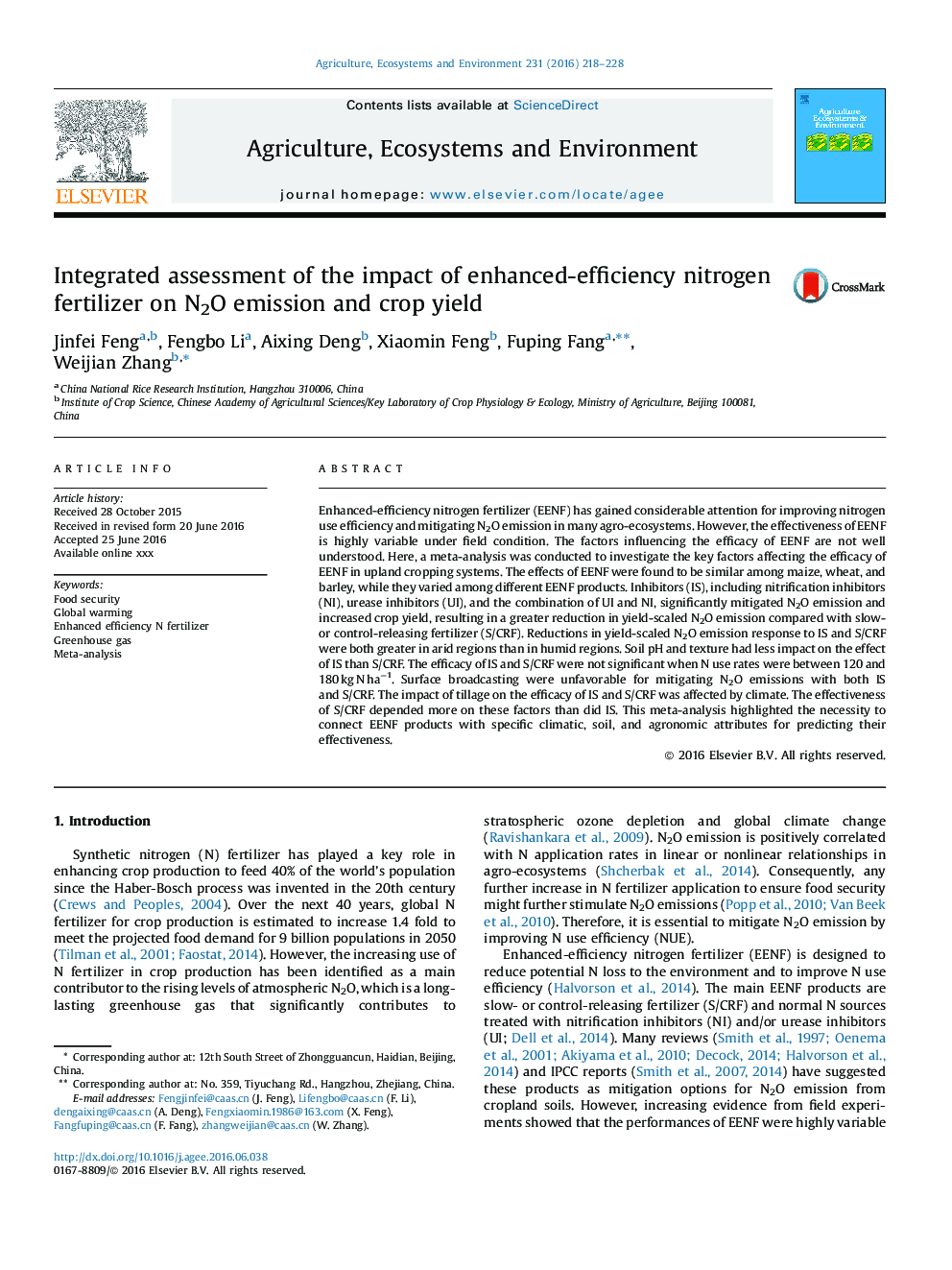| Article ID | Journal | Published Year | Pages | File Type |
|---|---|---|---|---|
| 8487356 | Agriculture, Ecosystems & Environment | 2016 | 11 Pages |
Abstract
Enhanced-efficiency nitrogen fertilizer (EENF) has gained considerable attention for improving nitrogen use efficiency and mitigating N2O emission in many agro-ecosystems. However, the effectiveness of EENF is highly variable under field condition. The factors influencing the efficacy of EENF are not well understood. Here, a meta-analysis was conducted to investigate the key factors affecting the efficacy of EENF in upland cropping systems. The effects of EENF were found to be similar among maize, wheat, and barley, while they varied among different EENF products. Inhibitors (IS), including nitrification inhibitors (NI), urease inhibitors (UI), and the combination of UI and NI, significantly mitigated N2O emission and increased crop yield, resulting in a greater reduction in yield-scaled N2O emission compared with slow- or control-releasing fertilizer (S/CRF). Reductions in yield-scaled N2O emission response to IS and S/CRF were both greater in arid regions than in humid regions. Soil pH and texture had less impact on the effect of IS than S/CRF. The efficacy of IS and S/CRF were not significant when N use rates were between 120 and 180 kg N haâ1. Surface broadcasting were unfavorable for mitigating N2O emissions with both IS and S/CRF. The impact of tillage on the efficacy of IS and S/CRF was affected by climate. The effectiveness of S/CRF depended more on these factors than did IS. This meta-analysis highlighted the necessity to connect EENF products with specific climatic, soil, and agronomic attributes for predicting their effectiveness.
Related Topics
Life Sciences
Agricultural and Biological Sciences
Agronomy and Crop Science
Authors
Jinfei Feng, Fengbo Li, Aixing Deng, Xiaomin Feng, Fuping Fang, Weijian Zhang,
